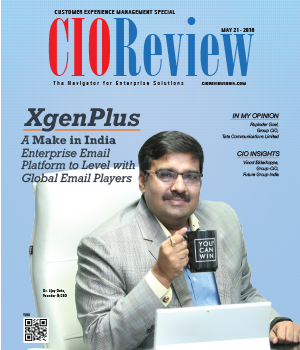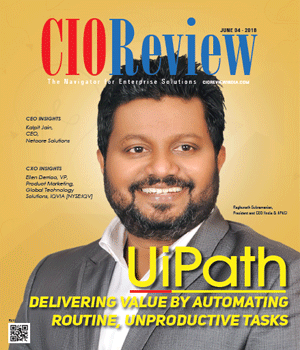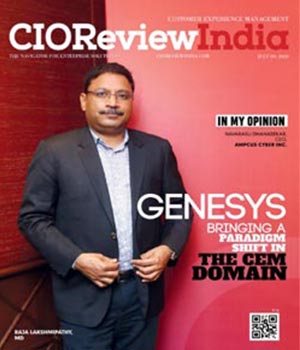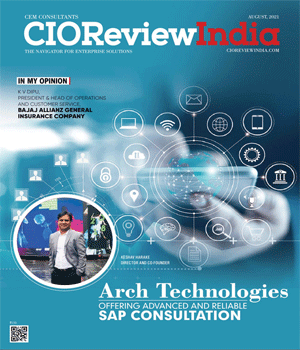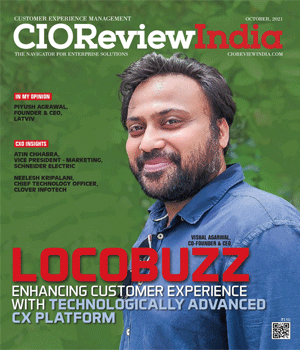
CEM a 2017 Perspective View
Pavan Malladi, CIO, Dhiraagu | Monday, 24 April 2017, 04:40 IST
 Customer experience management has evolved from managing with a big emphasis on measuring and then controlling the key variables that impact the “customer journey”, to actually building new experiences which actually create new impact to the customers. A lot of emphasis recently has been on big data, machine learning but from measurement, to impact analysis and then to action the time window is shrinking rapidly. Are current structures and methods the answer to great customer experience or is there a contrarian view? We will explore three main master trends that are impacting a need for this contrarian view. The three main trends are:
Customer experience management has evolved from managing with a big emphasis on measuring and then controlling the key variables that impact the “customer journey”, to actually building new experiences which actually create new impact to the customers. A lot of emphasis recently has been on big data, machine learning but from measurement, to impact analysis and then to action the time window is shrinking rapidly. Are current structures and methods the answer to great customer experience or is there a contrarian view? We will explore three main master trends that are impacting a need for this contrarian view. The three main trends are:
1) Digital emancipation has made it easier to produce goods and services
2) The ubiquitous availability of the internet owing mainly to mobile internet has led to the disappearance of physical boundaries
3) Social media has changed the ownership of opinion gatekeeping from few to many
Customer’s behavior seems to produce a need for personalization rather than segmentation into groups. Today’s distributed computing capability allows for this kind of tracking. The key advantage to this is that the customer gets “personalization”. Today a customer makes product choices from anywhere in the world digitally, at any point of time without restriction on a place and is driven not only by activism but to be an activist of anything remotely “not working”. When you put this into context a customer’s behavior is not just based on the affinity to the product or service associated with it, but based on the availability of choices, access to information related to those choices, influence from social media and the customer’s own inclination to become an activist. The activist behavior is most important to note so not just customer’s on-product behavior but also the correlation to social network behavior becomes vital to track as it impacts end perception.
This according to the contrarian view of this article, does not subscribe to mining large customer data, segmenting customers into behavioral segments and then having a preset action per subscriber. What it means is re-designing customer experience and its management taking into view the key contexts that are driving today’s new information overloaded, activist consumer. This can be done by taking the following steps:
1) Take all processes that require the customer to reach out to someone inside a serving or producing company and eliminate all need for customer to reach out and make sure customers do everything themselves. Use the “Reach” provided by the internet to absolutely do this 100 percent.
2) Secondly make the resources freed up by the above step and observe customer behavior via trails on digital platform built for the step 1. Understand key triggers that diverge the customer journey within the fixed continuum of the digital platform outside to social media. In fact drive customers to social media at every stage without abrasive intrusion.
3) Observe the social media feedback both aggregate via machine learning as well as manually for odd behaviors to better the models, and have Expert customer technicians deal with responses. Doing this control the gate-keeping of opinions on your product and drive activism towards, not away from your product.
Controlling Customer experience via the above steps may now be imperative rather than tracking. Naysayers on this contrarian view may raise severe impediments to the above steps and some of those are listed below with exact reasons why this inversion of paradigm may actually work.
1) “But Our Products need explanation’’: If your product needs to be explained first internally to a bunch of care representatives who have to be constantly trained and secondly by these trained personnel to the consumer, then the product itself is not good enough to compete in today’s market. You might as well re-think ways in which you are producing and letting consumers consume your product.
“But we need training first”: Instead of training a large contingent of care representatives, have people involved in producing your product sitting in turns for a percentage of their capacity utilized to monitor customer behavior. By doing the first step you have directed all customer behavior to be on a single playing field, your digital platform and therefore in that closed continuum monitoring is easy.
This reduces cycle time from context to resolution, reduces BIG DATA analysis needs and leads to your own resources “Hacking Growth” rather than determining the reasons, “Why No Growth?” More importantly, gives tools to gate keep opinions on your product rather than react to formed opinions.
A change in CEM thinking is required. Digitalized platforms can provide this ability by managing in real time. The change in thinking described can be applied to practical situations once the paradigm is shifted away from measurement to management via platforms.
CIO Viewpoint
How The Sale of Counterfeit Products Can be...
By Khalid Wani, Senior Director, Sales, India- Western Digital
How Customer Experience Is Driving Supply Chain...
By Joseph Lim, Sales Director, APAC, BluJay Solutions
Connect to Customers - Customer Relationship...
By Satrajit Bhattacharya, IT Head, Future Group India
CXO Insights
How Omni-channel Customer Engagement Drives...
By Ankit Tandon, Chief Operating Officer, OYO Townhouse
By In conversation with CIOReview, Krishna Somayaji, MD, Somayaji Group talks about the group of companies
Which Segment of Analytics Space Can Drive the...


